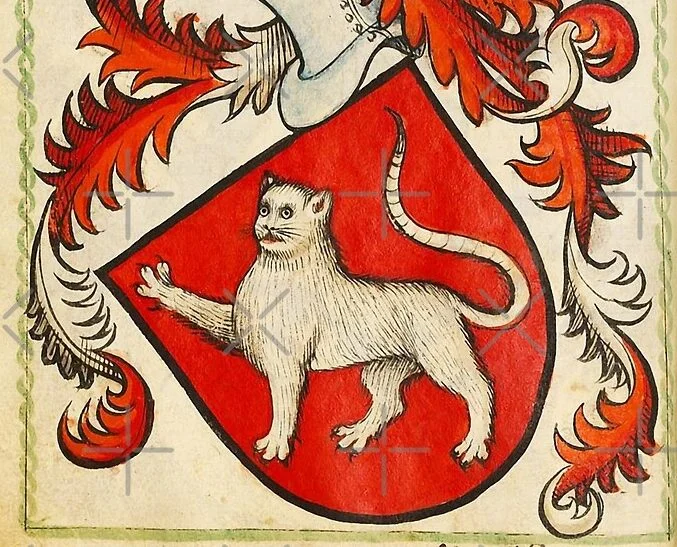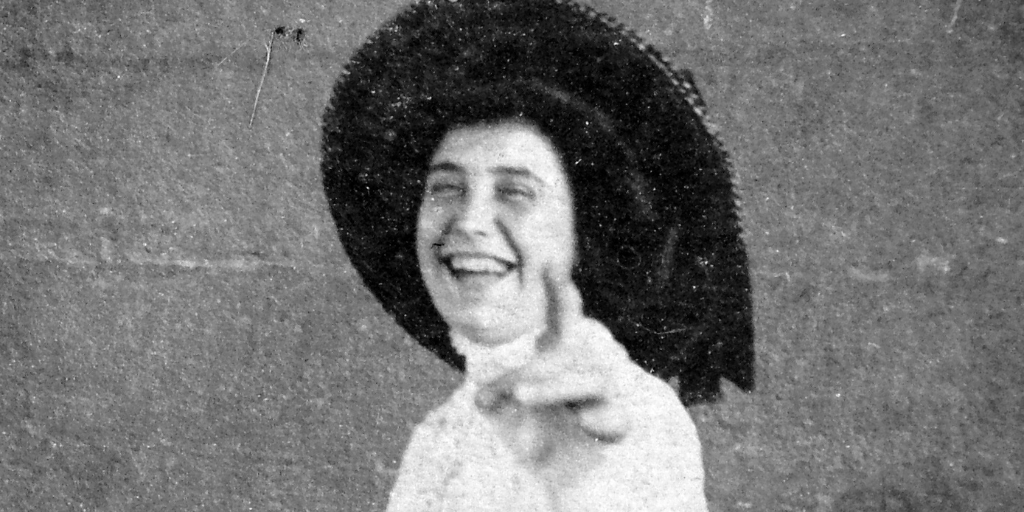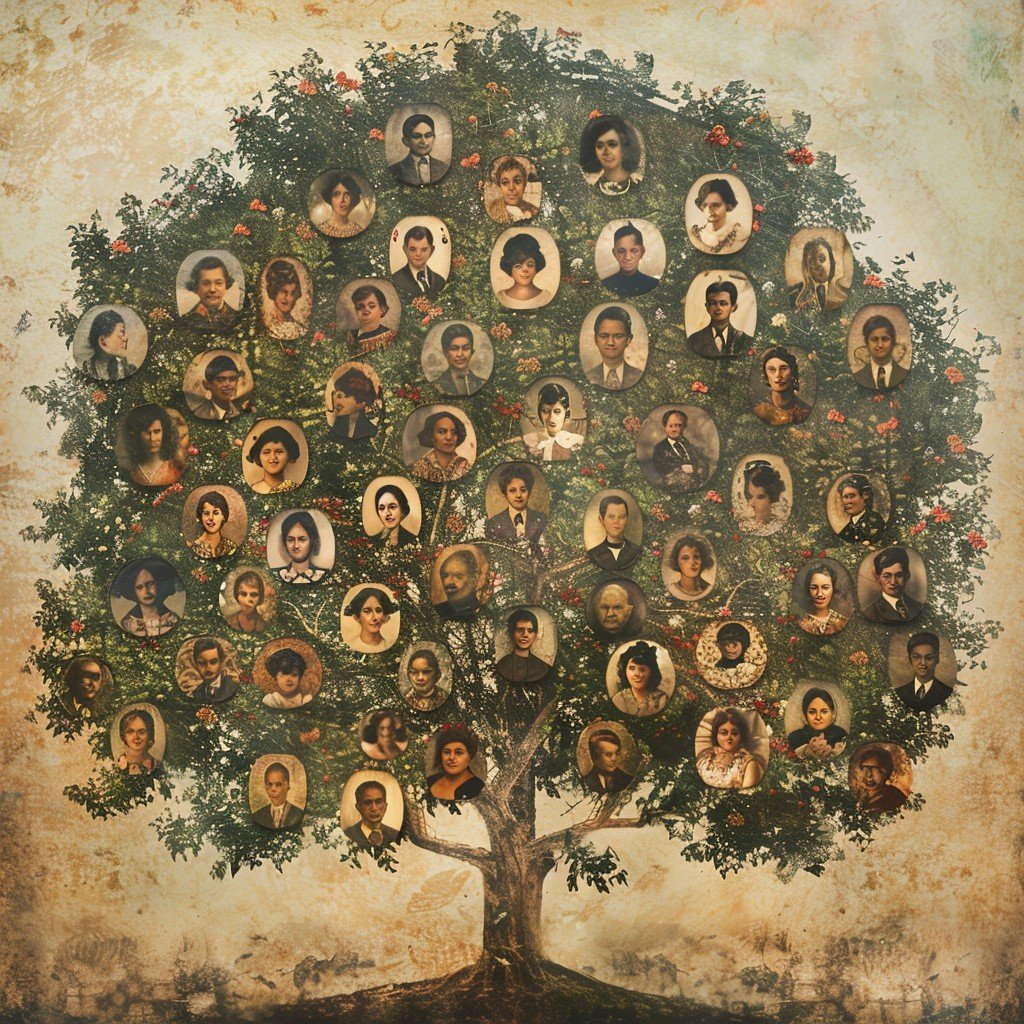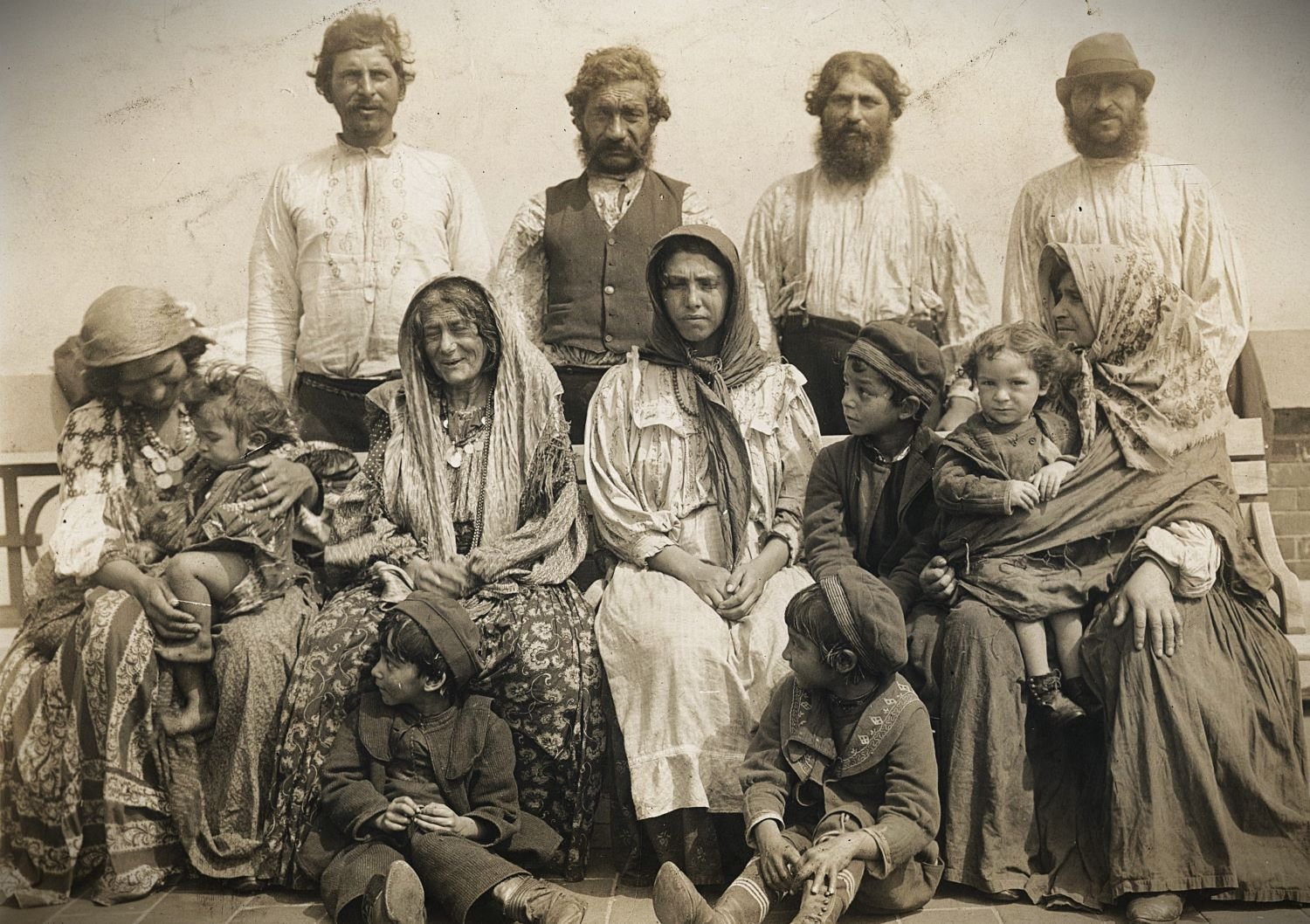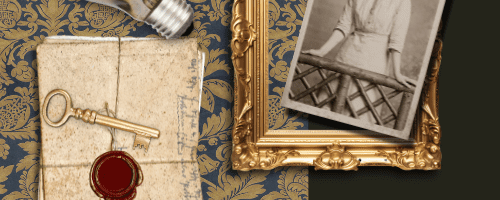When you hear “coat of arms,” you probably picture something regal: lions rampant, crosses, maybe a majestic unicorn if things get whimsical. What you don’t expect? A bear playing the bagpipes. A beaver casually gnawing through a tree. A headless man holding his own head like it’s just another Tuesday.
But medieval and early modern heraldry was often less “dignified symbol of noble lineage” and more “fever dream from a bored scribe with too much ink.” Some were pun-based, others steeped in family lore, and a few were clearly designed after someone hit the mead too hard.
This post is your backstage pass to the most delightfully absurd coats of arms ever committed to parchment.
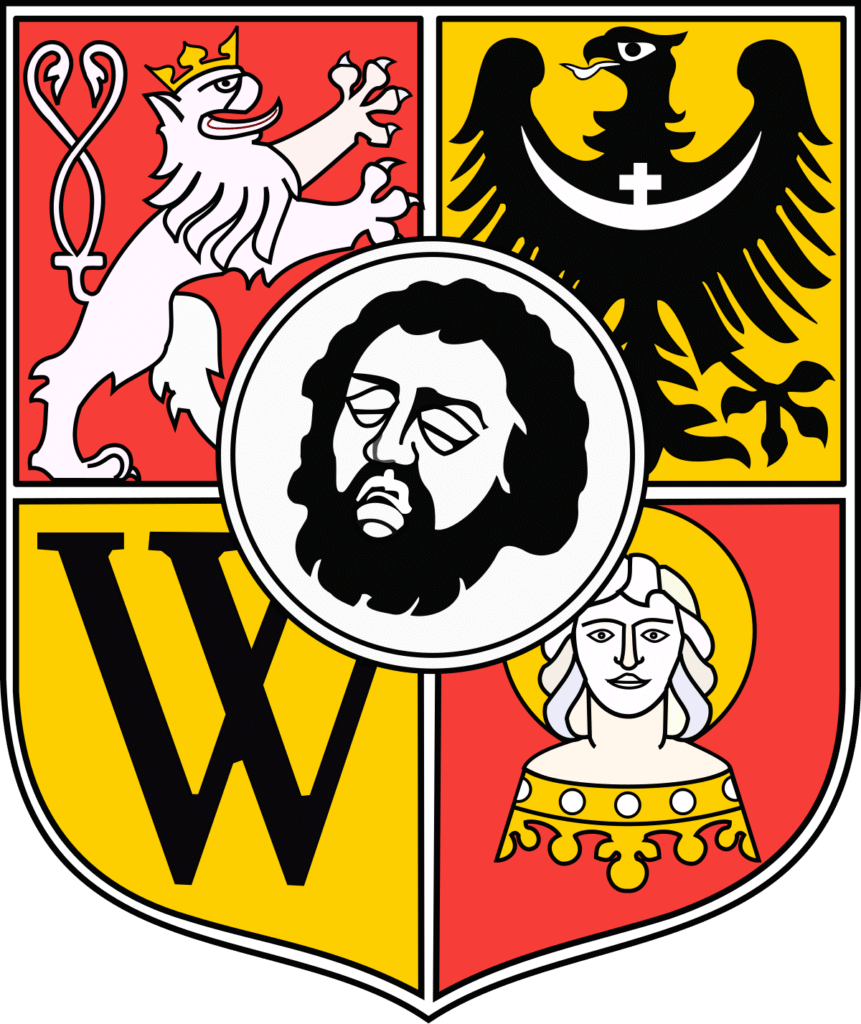
Coat of Arms of Wrocław
Wrocław’s coat of arms is a quartered shield combining sacred and political symbols. Most striking is the severed head of St. John the Baptist, the city’s patron saint, shown with a halo and calm expression. The severed head, though shocking, is a common heraldic image of martyrdom and sanctity, especially in Central Europe. In some cases the head is often shown with blood dripping from the neck. (Yikes!)
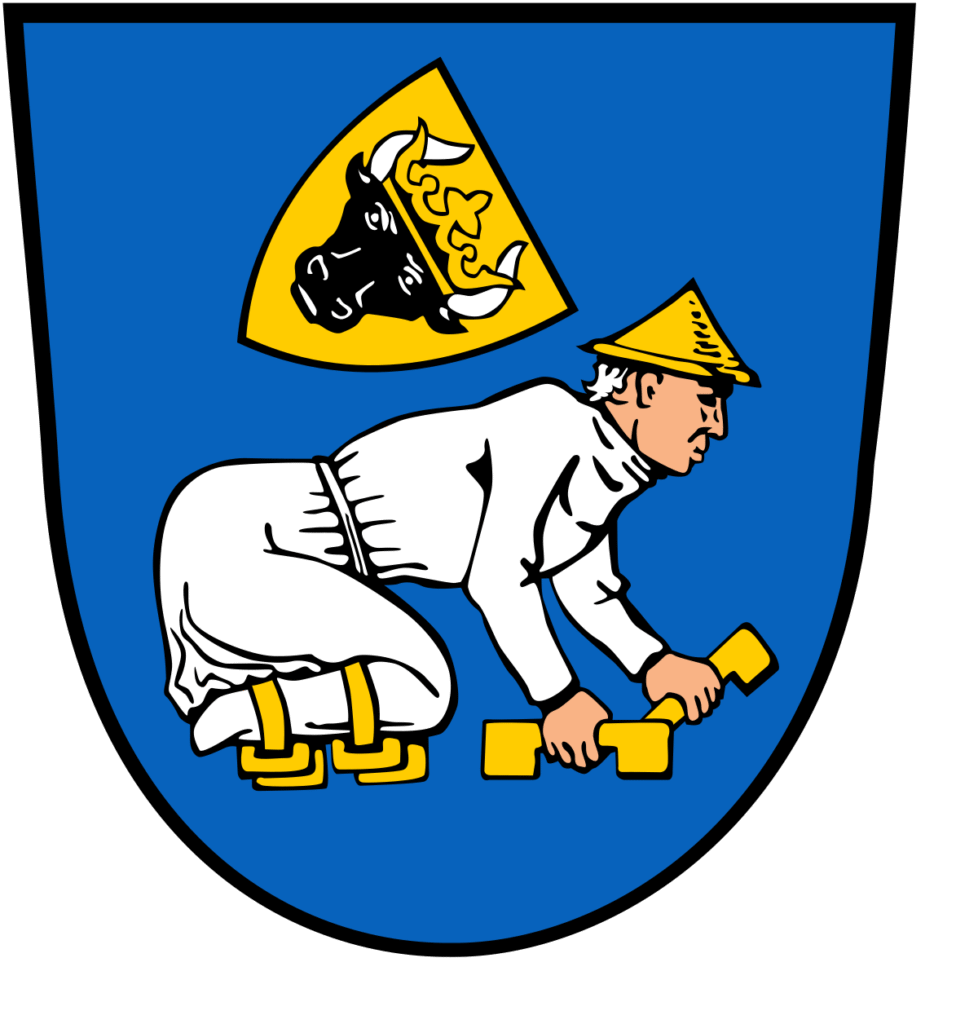
Kröpelin, Germany
Kröpelin’s coat of arms shows a legless man in a white robe, wearing a golden hat and dragging himself forward on golden crutches. Above him floats a small golden shield with a black crowned bull’s head, the emblem of Mecklenburg. Granted officially in 1999, the design is a visual pun: Kröpelin sounds like Krüppel – German for “cripple.” While the image is jarring by modern standards, it reflects a long-standing heraldic tradition of canting arms.
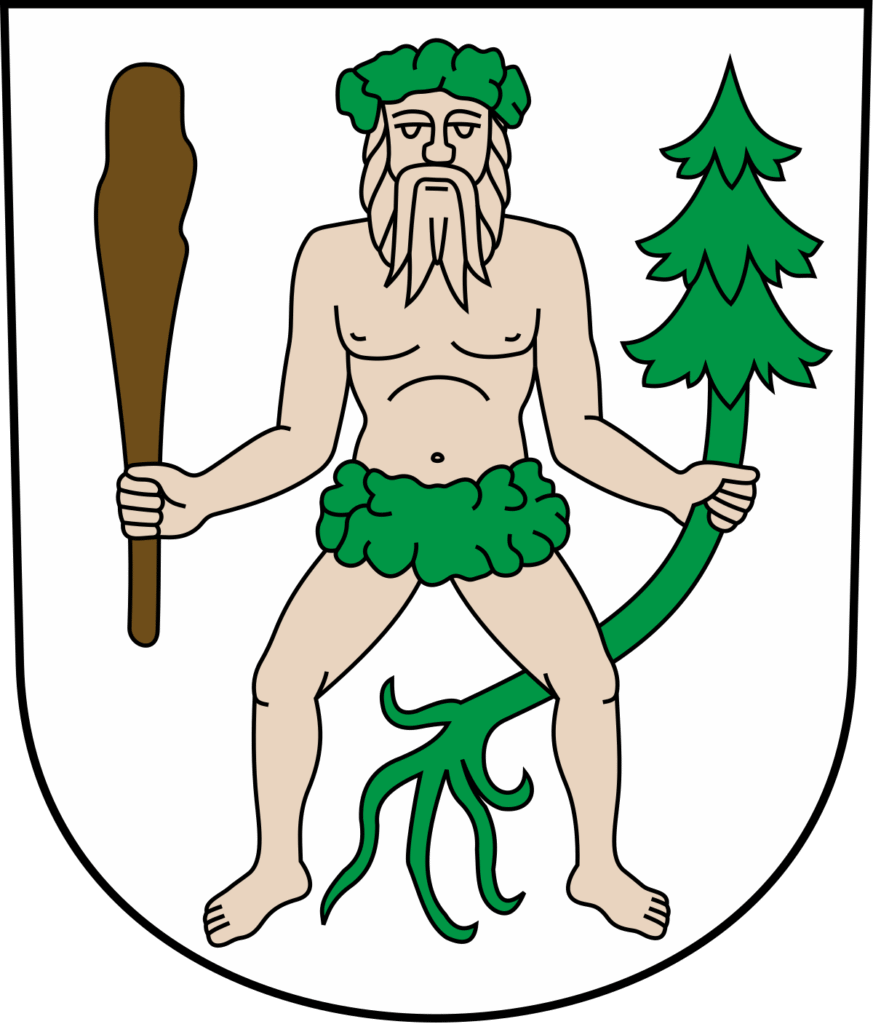
Grabs, Switzerland
Grabs bears the image of a wild man, standing front-facing, crowned and girdled in green leaves. In one hand he holds a wooden club, in the other, a full uprooted pine tree – as if mid-myth or mountain ritual. Officially adopted in 1938, the design draws from much older seals and Alpine folklore. The wild man, a common figure in Swiss heraldry, symbolizes untamed nature, primal strength, and deep ties to the land. The pine tree likely nods to the forests around Grabs, while the entire image captures a community rooted in wilderness, myth, and endurance.

Hensbroek, Netherlands
Hensbroek’s coat of arms shows a silver hen standing proudly on a pair of golden trousers, all set on a red shield. Granted in 1817, this is a classic example of canting arms, basically a visual pun. While Hensbroek actually means “hen’s marsh,” it sounds like “hen’s pants,” and heraldry ran with the joke. The trousers may also symbolize reclaimed land. It’s one of the most delightfully bizarre coats in Dutch heraldry.
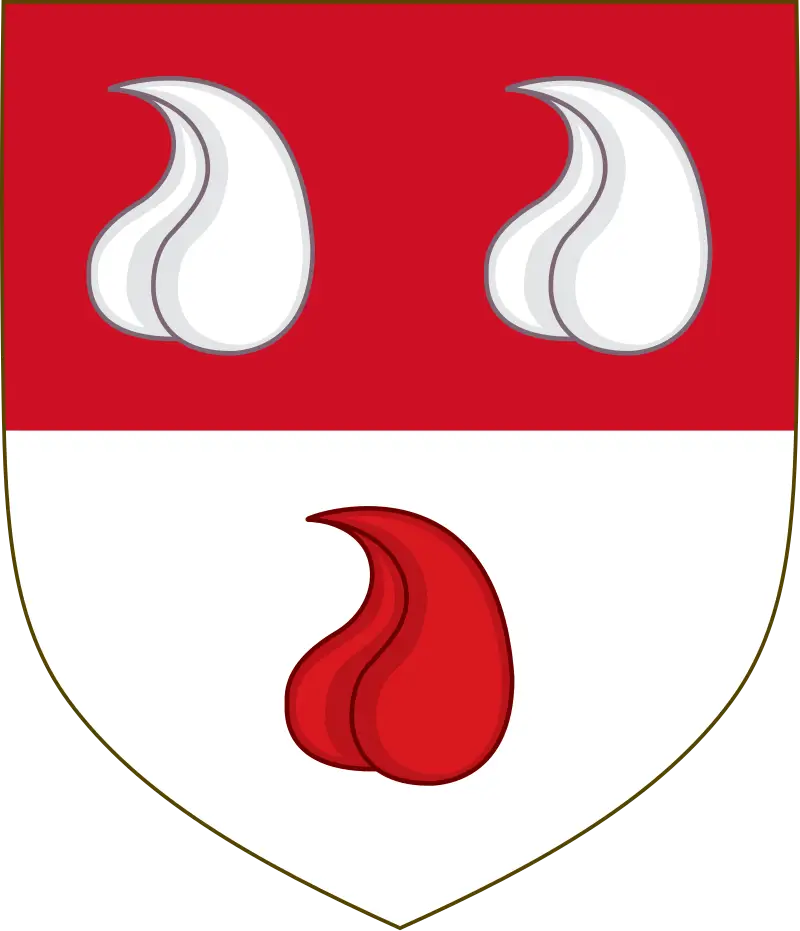
Colleoni coat of arms
The Colleoni coat of arms features three pairs of testicles arranged neatly on a shield. This bold design comes from the legendary Italian condottiero Bartolomeo Colleoni, whose surname just so happens to echo coglioni, Italian slang for, well, balls. Rumor has it he had three of his own, though history’s a bit shy on confirming the details. Either way, it’s a jaw-dropping example of canting arms that leans into the pun with full… enthusiasm. Definitely one of the most eyebrow-raising crests in Italian heraldry.
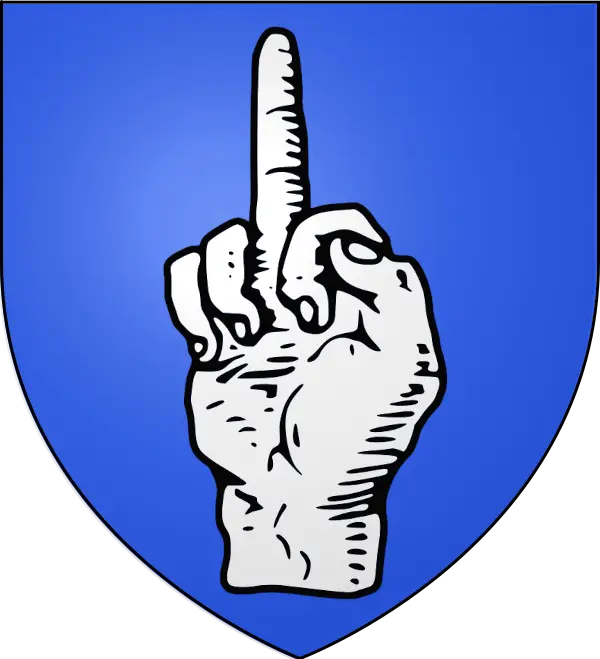
Jean Doyard, France
A disembodied hand raised in what is unmistakably the middle finger gesture. It appears in the Armorial général de France, volume 4, page 252, compiled by Charles-René d’Hozier. While it’s tempting to read it as a punk-rock move centuries ahead of its time, this might’ve been Doyard’s cheeky way of saying “I’ll pay your tax, but you’re not getting a serious crest out of me.” Others believe it was a genuine symbol of defiance or perhaps even a canting reference to a family trait or local joke. Either way, it stands as one of the most hilariously defiant entries in all of heraldic history.

Hajdúdorog, Hungary
Hajdúbodrog’s coat of arms features a severed Turk’s head, cleanly lopped off and held high like a gruesome trophy. It’s not just morbid flair, it’s a brutal badge of honor. Common in Central European heraldry, this symbol harks back to the bloody clashes with the Ottoman Empire. Sends the message: “here’s what happened to the last guy who tried to conquer us.” For towns like Hajdúbodrog, it’s a proud reminder of resistance and survival, immortalized in ink and iron.
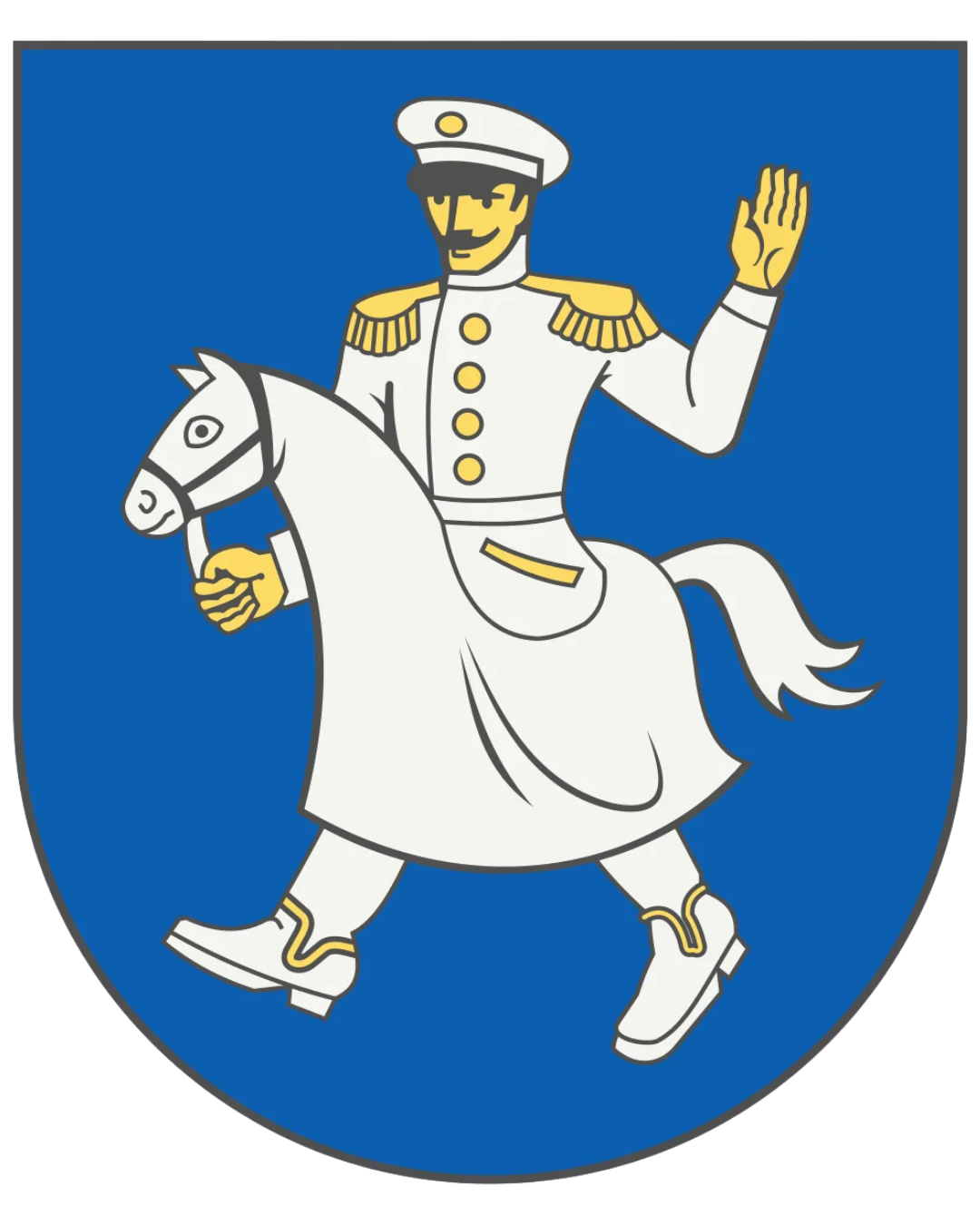
Gražiškiai, Lithuania
A blue shield shows a man dressed in a white uniform, wearing a whimsical horse costume with only two legs visible. He represents the commander of the traditional Šyvis festival, literally dancing as a hobbyhorse. Echoes a centuries‑old local tradition: between Christmas and Epiphany, locals celebrate the Šyvio šokdinimas (white horse dance), where costumed characters travel from house to house, with the “rider” jumping and dancing.

Honorable mention: Stowe Armorial
At the heart of the Gothic Library at Stowe lies the astonishing Stowe Armorial: a monumental 1.4-meter-wide heraldic painting, created in 1806 by P. Sonard. Commissioned by George Nugent-Temple-Grenville, this dazzling display boasts an extraordinary 719 quarterings, tracing the bloodlines of the Temple, Nugent, Brydges, Chandos, and Grenville families. Among its blazoned treasures are ten variations of the English Royal Arms and the shields of dynasties like Spencer, De Clare, Mortimer, and Mowbray. It is, without question, one of the most extravagant genealogical declarations ever committed to canvas.

